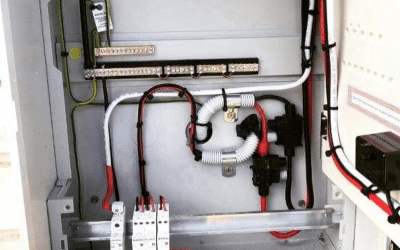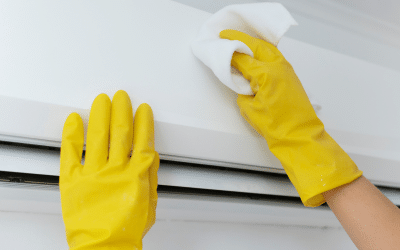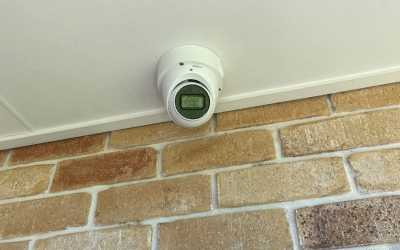In the quest for a more energy-efficient and cost-effective home, conducting a home energy audit emerges as a pivotal first step. This comprehensive guide is designed to navigate you through the process of evaluating your home’s energy use, whether you’re embarking on this journey alone or seeking professional assistance. Let’s dive into how you can illuminate energy savings and enhance your living space.
Understanding Your Home’s Energy Consumption
The energy footprint of a home is a complex web, with consumption spread across various domains. Here’s a breakdown of the typical energy users in an average household:
Heating & Cooling (41%)
The majority of energy in Australian homes is consumed by heating and cooling systems. To enhance energy efficiency, consider installing programmable thermostats that allow temperature regulation according to time of day and occupancy. Upgrading to high-efficiency systems, ensuring proper insulation, and regular maintenance of HVAC systems can significantly reduce this heavy energy toll.
Appliances (17%)
Everyday appliances, while essential, are substantial energy consumers. Selecting energy-efficient models, using them during off-peak hours, and utilizing them to their full capacity can lead to energy conservation. Moreover, unplugging devices not in use to avoid ‘vampire power’ – the energy used by electronics when they are turned off but still plugged in, can further decrease energy wastage.
Hot Water (23%)
A significant portion of energy is allocated to heating water. Employing water-efficient fixtures, reducing the water heater’s temperature, insulating hot water pipes, and considering energy-efficient water heating systems like solar water heaters can contribute to lower energy use.
Refrigeration (8%)
Refrigerators run continuously and thus use a consistent stream of energy. Upgrading to an energy-star certified refrigerator, ensuring it’s not set colder than necessary, maintaining the unit properly, and not overfilling it can ensure better energy efficiency.
Lighting (5%)
Lighting our homes, especially using incandescent bulbs, contributes a notable share to energy usage. Transitioning to LED bulbs, which use at least 75% less energy, and last 25 times longer than traditional incandescent lighting, along with making use of natural light and turning off lights when not needed, can lead to significant energy savings.
Cooking (6%)
Cooking requires a fair amount of energy, with ovens and stovetops being the main culprits. Utilizing energy-efficient cooking appliances, keeping oven and refrigerator doors closed, and cooking with lids on pots can minimize energy use. Additionally, using microwaves or toaster ovens for small meals can be more energy-efficient than firing up the stove or oven.
DIY Home Energy Audit Steps
Embarking on a DIY home energy audit entails a systematic review of your home’s energy use. Here’s how to tackle each area:
Heating & Cooling
- Inspect for drafts around windows and doors, using weatherstripping or caulk to seal leaks.
- Evaluate insulation levels in attics and walls to ensure they meet recommended standards for your region.
Appliances
- Assess the age and efficiency of appliances. Consider replacements with Energy Star-certified models for better efficiency.
- Use smart power strips to manage standby power consumption.
- Hot Water
- Check the thermostat on your water heater. Setting it to 120°F can reduce energy use without sacrificing comfort.
- Inspect pipes and the water heater for insulation, adding covers where necessary to reduce heat loss.
- Refrigeration
- Verify that fridge and freezer temperatures are set efficiently (35-38°F for the refrigerator, 0°F for the freezer).
- Ensure door seals are airtight to prevent cold air from escaping.
Lighting
- Replace incandescent bulbs with LED bulbs, which are more energy-efficient and have a longer lifespan.
- Consider smart lighting solutions for automated energy savings.
Cooking
- Opt for energy-efficient cooking methods and appliances, such as pressure cookers and microwave ovens, which use less energy than traditional ovens and stovetops.
Professional Energy Audits: What to Expect
A professional energy audit is a thorough process that provides a deep dive into your home’s energy usage, revealing the intricacies of consumption and inefficiencies that are not apparent to the untrained eye. Here’s what happens during a professional audit:
- Initial Consultation: This may involve a questionnaire about your home’s past energy bills, your family’s daily energy habits, and concerns you have about your home’s energy use.
- Blower Door Test: Professionals use a blower door to measure the extent of air leaks in the building envelope. This test depressurizes the home, revealing hidden air leakages.
- Infrared Imaging: Using infrared cameras, auditors can detect thermal defects and air leakage in building envelopes. This advanced technology provides a visual representation of temperature differences, highlighting areas where insulation may be inadequate.
- Ventilation Check: Adequate ventilation is crucial for maintaining indoor air quality. Auditors evaluate your ventilation system to ensure it meets health and safety standards.
- Inspection of Appliances and Systems: Energy auditors assess the efficiency of appliances and home systems, including heating and cooling units, lighting fixtures, and water heaters.
- Comprehensive Report: At the end of the audit, you will receive a detailed report that outlines the findings and provides specific recommendations for improvements. This may include:
-
- Detailed Insulation Upgrades: Recommendations for enhancing insulation in key areas like attics, walls, and floors to prevent heat loss and gain.
- Advanced Heating and Cooling System Optimizations: Advice on upgrading to high-efficiency systems or enhancing the current system’s efficiency.
- Recommendations for Energy-Efficient Appliances and Lighting: Suggestions to replace or upgrade existing appliances and lighting fixtures with high-efficiency models.
Leveraging Audit Insights for Energy Savings
The insights from a professional energy audit can be transformative, leading to a host of benefits:
- Lower Energy Bills: Implementing the recommended changes can reduce energy waste, translating directly into lower monthly utility costs.
- Improved Home Comfort: Sealing leaks and enhancing insulation contribute to a more consistent indoor temperature, boosting overall comfort.
- Enhanced Indoor Air Quality: Proper insulation and ventilation not only save energy but also improve the air quality inside your home.
- Increased Home Value and Marketability: Energy-efficient homes are attractive to buyers, potentially increasing the market value of your property.
By taking a proactive approach to home energy management, you’re not only contributing to a more sustainable environment but also investing in the long-term health and efficiency of your living space.
Conclusion
In summary, a professional energy audit provides the roadmap for energy savings and enhanced home comfort. It’s a smart investment that pays dividends in lower utility bills, improved comfort, and a smaller carbon footprint. Don’t let inefficiencies drain your resources—take action today. Contact Leolec for a comprehensive energy audit and take the first step towards a greener, more cost-effective home.
FAQ’s
What is a home energy audit and why is it important?
A home energy audit is a detailed assessment of your home’s energy use. It is essential because it helps identify where your home is losing energy and what steps you can take to improve energy efficiency, ultimately saving money and increasing comfort.
Can I perform an energy audit myself?
Yes, you can conduct a basic energy audit yourself by inspecting your home for air leaks, checking insulation levels, and assessing your appliances and lighting for energy efficiency.
What tools do I need for a DIY energy audit?
For a DIY energy audit, you’ll need a few tools like a flashlight, tape measure, incense stick (to detect drafts), and possibly a thermometer to check refrigerator and freezer temperatures.
How does a professional energy audit differ from a DIY audit?
A professional energy audit is more comprehensive. It uses specialized tools like blower doors and infrared cameras to find leaks and areas of inadequate insulation that might not be as apparent in a DIY audit.
What kind of improvements can I expect to make after an energy audit?
Improvements can range from simple fixes like sealing windows and doors to more significant upgrades like adding insulation or replacing outdated appliances with more energy-efficient models.







